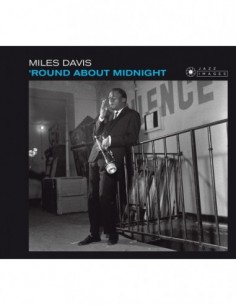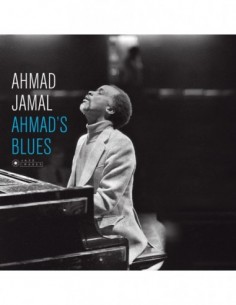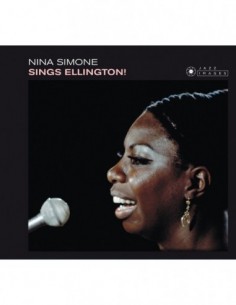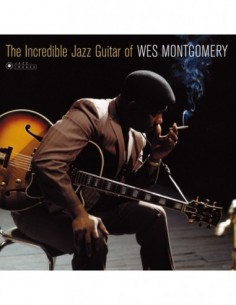Legrand Jazz
Miles DavisTHE JEAN-PIERRE LELOIR COLLECTION
DELUXE PACKAGING – Thick cardboard Fold Open Digi-Sleeves with inner sleeves
BONUS ALBUM
Even though Michel Legrand is most famous as a film composer, his LP Legrand Jazz (Columbia CS-8079) is a true jazz classic. To record it, Legrand took eleven iconic jazz tunes and arranged them for three different groups of superb jazzmen. The big names on this album include Miles Davis, John Coltrane, Ben Webster, Herbie Mann, Art Farmer, Donald Byrd, Bill Evans, and Hank Jones, among others. Throughout this superlative album, the arrangements are colorful and unusual, making one wish that Legrand had recorded more jazz albums through the years. Miles’ classic collaboration with vibraphonist Milt Jackson, Miles Davis-Milt Jackson Quintet/Sextet (Prestige PRLP-7034), has been added here in its entirety as a bonus.
PERSONNEL:
Arranged & conducted by MICHEL LEGRAND
1-4: MILES DAVIS (tp), Herbie Mann (fl), Jerome Richardson (cl, bar), Phil Woods (as), John Coltrane (ts), Betty Glamann (harp), Eddie Costa (vib), Bill Evans (p), Barry Galbraith (g), Paul Chambers (b), Kenny Dennis (d). New York, June 25, 1958.
5-8:
Frank Rehak, Billy Byers, Jimmy Cleveland, Eddie Bert (tb), Herbie Mann (fl), Ben Webster (ts), Hank Jones (p), Major Holley (tu), George Duvivier (b), Don Lamond (d). New York, June 27, 1958.
9-11:
Art Farmer, Ernie Royal, Donald Byrd, Joe Wilder (tp), Frank Rehak, Jimmy Cleveland (tb), Jimmy Buffington (fhr), Gene Quill, Phil Woods (as), Seldon Powell (ts), Teo Macero (bar), Don Elliott (vib), Nat Pierce (p), Milt Hinton (b), Osie Johnson (d). New York, June 30, 1958.
Original sessions produced by TEO MACERO.
Bonus album (12-15): MILES DAVIS-MILT JACKSON QUINTET/SEXTET
MILES DAVIS, trumpet; MILT JACKSON, vibes; JACKIE McLEAN, alto sax (on “Dr. Jekyll” and “Minor March” only); RAY BRYANT, piano; PERCY HEATH, bass; ART TAYLOR, drums.
Hackensack, New Jersey, August 5, 1955.
Original session recorded by Rudy Van Gelder & produced by Bob Weinstock.
TRACKS:
01 WILD MAN BLUES (Louis Armstrong-Jelly Roll Morton) 3:24 02 ‘ROUND MIDNIGHT (Thelonious Monk-Cootie Williams-Bernie Hanighen) 3:01 03 THE JITTERBUG WALTZ (Fats Waller) 5:20
04 DJANGO (John Lewis) 4:16
05 NUAGES (Django Reinhardt) 2:25
06 ROSETTA (Earl Hines-William Henri Woode) 7:19
07 DON’T GET AROUND MUCH ANYMORE (Duke Ellington-Sidney Keith Russell) 2:36
08 BLUE AND SENTIMENTAL (Count Basie-Mack David-Jerry Livingston) 3:27
09 STOMPIN’ AT THE SAVOY (Benny Goodman-Chick Webb-Edgar M. Sampson) 3:50 10 A NIGHT IN TUNISIA (Dizzy Gillespie-Frank Paparelli) 5:55 11 IN A MIST (Bix Beiderbecke) 3:22
12 DR. JEKYLL [aka DR. JACKLE] (Jackie McLean) 8:56
13 BITTY DITTY (Thad Jones) 6:37
14 MINOR MARCH (Jackie McLean) 8:19
15 CHANGES (Ray Bryant) 7:12
Total Time: 76:00
- Format
- CD
- Discs
- 1
- Label code
- 38024
 Cookie preferences
Cookie preferences
































































